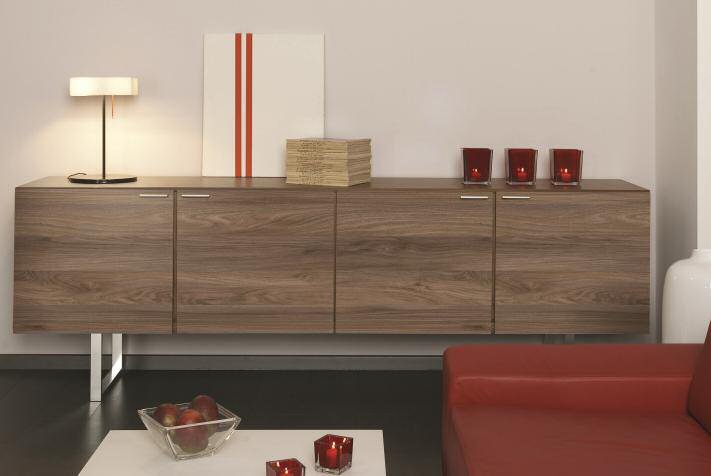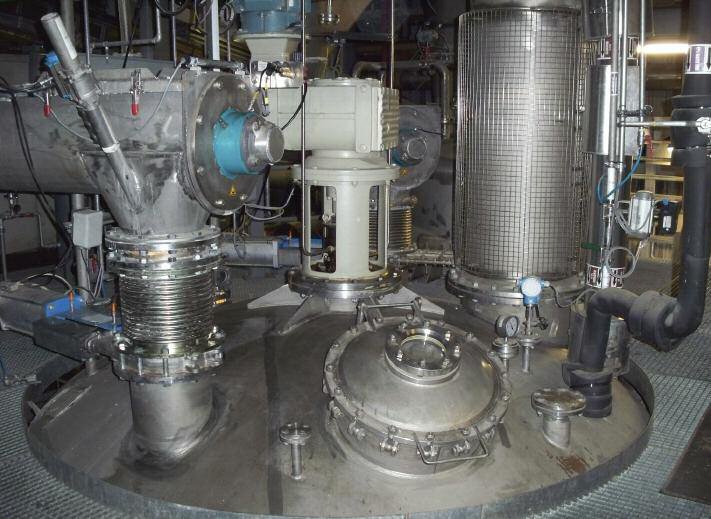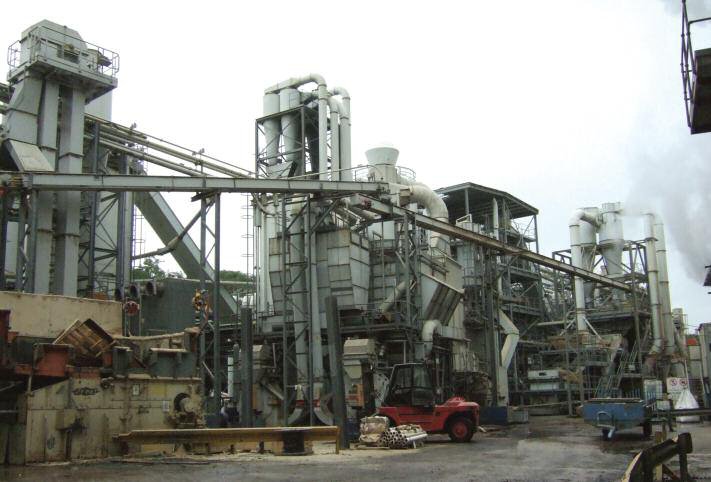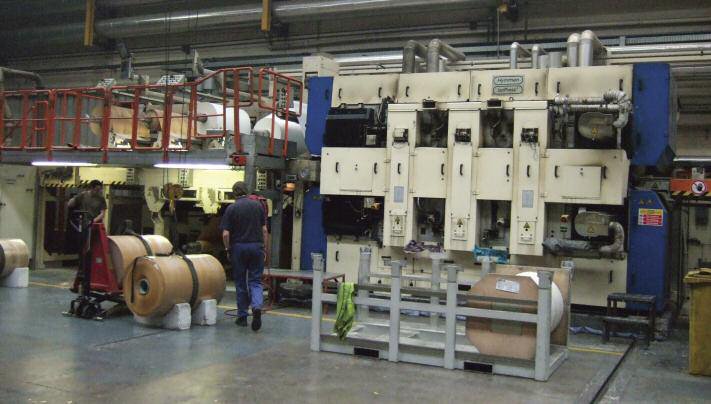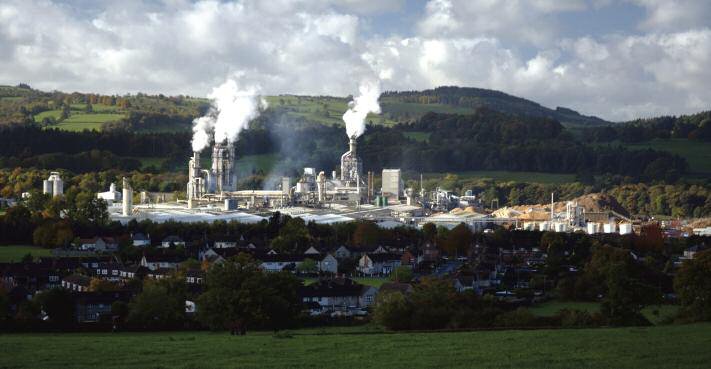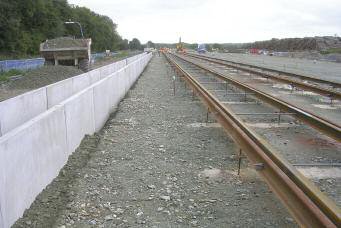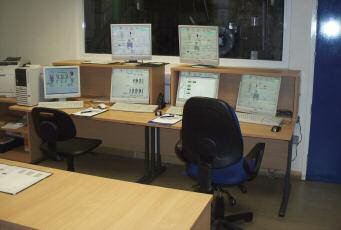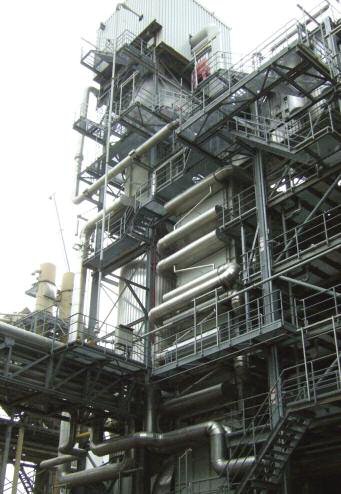Investing for the future at Kronospan’s UK plant
3 December 2010To put the Kronospan group’s European activities into perspective, it currently has panel making capacities of around nine million m3 of particleboard, five million m3 of MDF and three million m3 of OSB.
At least, those were the figures as at the second quarter of 2010, but the situation is constantly changing. For instance, on the day of my visit at the end of September, the group announced the acquisition of Turkish panel producer SFC in Kastamonu, adding further capacity in both particleboard and MDF to Kronospan’s totals.
The Kronospan group now has 29 wood panel production sites in 24 countries, primarily in ‘greater Europe’, but also two in China and one in the US. Group turnover is more than €2.7bn and the company globally employs about 11,000 people.
Kronospan first moved into the UK in 1970 with the purchase of Maesgwyn Farm in the small town of Chirk (population ca 4,000), on the border of England with North Wales.
It was a greenfield agricultural site and the original old farmhouse still forms part of the offices of Kronospan Limited.
At the time, mid-Wales offered a good source of logs for the proposed modest particleboard mill and although today the company sources its wood from further afield, the strong development of the region’s infrastructure in the intervening years has meant that Chirk is still well-connected by road and rail (more of that later) to its wood supplies – and to its customers – in the rest of the UK.
Historically, the main local employer had been the Welsh coal mining industry, which produced some of the highest quality coal in the world, but this industry was in steep decline by the 1970s. Thus a skilled pool of labour was available to the new, Austrian employer.
Today, Kronospan Limited has a fully integrated 120 acre site and is the largest wood panel producer in the UK, with significant particleboard, MDF, HDF, T&G particleboard flooring, melamine faced panels (both MDF and particleboard based), kitchen worktop and laminate flooring capacity.
In the late 1980s, the company bought the factory next door and this has since been extended considerably to provide the base for the company’s Kronoplus operation, which encompasses all its value-added production.
Investment has been a continuous process at Chirk, with over £130m being injected in the last 10 years alone.
The company began life in Chirk with expectations of employing about 100 people in one production hall but today it employs 600 there, with 90% of them living within a 16km radius. That makes the company one of the top 10 industrial employers in Wales.
All panel production today is carried out on Siempelkamp ContiRoll continuous press lines, the oldest of which was installed to make MDF in 1993. That ContiRoll press is 28x2.65m.
In 1997, Kronospan replaced its, by then five, single-opening particleboard lines with one ContiRoll of 48.5x2.65m and a capacity of 600,000m3.
The site also has a second MDF line, which has a press of 48.5x2.65m.
Total raw board capacity for Chirk today is around 600,000m3 each of MDF and particleboard.
The site also produces 500,000 postformed worktops, 18 million m2 of laminate flooring and 350,000m3 of melamine faced material (MFC), per year, turning over around £200m.
The paper overlays and films for the MFC and laminate flooring are impregnated onsite in four Vits impregnation lines.
For pressing the MFC and laminate flooring panels, there are six single-daylight short-cycle presses and a Hymmen continuous press.
The Hymmen is dedicated to laminate flooring production, with all layers being added consecutively from reels in the one process. Those reels are each monitored by CCTV cameras to ensure correct foil alignment and there is a GreCon Superscan camera-based surface inspection scanner at the end of the Hymmen line.
The most recent short-cycle press is a Wemhöner with three platens in its length, each of 2.62x2.07m and this is used for both flooring and MFC. The other three are all 5.5x2.07m presses; two by Siempelkamp and one by Wemhöner.
There are three Homag laminate flooring lines and one worktop line.
All the raw panel production at Chirk requires 50,000 inward timber deliveries (lorry equivalent) per year, by road and rail.
Talking of wood supply, also on the site, and built in 1994, is one of the largest sawmills in the UK, which consumes 20,000 tonnes of logs per month.
This facility gives us flexibility on the log side to make best use of the roundwood that comes into Chirk, but it also provides residues for the particleboard line,said managing director Ludwig Scheiblreiter, who succeeded his father in that position.
The company has not only invested heavily in production facilities, but also in environmental equipment to protect the very-nearby population of Chirk.
On-site resin manufacturing is also an important element of Kronospan’s operations and the company has invested £4m in that area in the last two years.
It installed a new urea storage silo and a new 50 tonne resin kettle with an auto-feed system, giving increased flexibility and the ability to make tailored resins.
This now gives the Chirk site two 50 tonne resin kettles in addition to two 15 tonne reactors used to make impregnation resins. All control systems have been updated to the latest real-time-graphics.
A further one million pound investment brought a new formalin plant reactor on line
in September this year, replacing a 25-year-old installation, together with the latest control system. There are two reactors here – one new and one refurbished.
All these resin facilities were projectmanaged by Kronospan itself, using its global experience.
Another major investment under way at the time of my visit was a brand new £4m rail siding, for two 400m lines, which was being constructed on largely built-up land at the north end of the site. This facility will triple the rail infeed capacity for logs and is due to come into operation in January 2011. The factory site is adjacent to the main Shrewsbury to Chester railway line.
The logs are loaded in Carlisle, on the Scottish borders, and that terminal is also being upgraded to cope with the increased capacity.
Of course the wood raw material supply is not all in log form and Kronospan says it recycles over 300,000 tonnes of “postconsumer timber wastefor use in its particleboard line.
“We have about 14 years’ experience in this,said Kronospan director Mike McKenna. “Clever transport operators can achieve way above 85% loaded miles by delivering product to our customers and bringing back the recycled wood,he said.
“This accounts for about 65% of wood consumption for particleboard, with the balance coming from sawmill residues and sawdust. For MDF, we utilise logs and hacker chips [from outside sources and Kronospan’s own sawmill].
“We utilise our resources very efficiently and recycle 95% of all our waste and we are a carbon positive site, certified by BlueGreen Carbon Company,added Mr McKenna. “Our biomass boiler alone reduces carbon emissions by 60,000 tonnes a year.
Obviously it was not going to be long before the biomass-for-energy issue came into this conversation too.
“With the subsidies being paid to biomass energy generators, they could pay up to twice what we can afford to pay for wood and still break even and the UK has only 12% forested area,said Mr Scheiblreiter.
He went on to point out that the heat produced by biomass energy producers is wasted as there is no subsidy for that. That waste is certainly not the case in biomass energy generated by panel manufacturers, who utilise the heat in their process.
“We are carbon neutral and this industry has always worked that way, but heat generation in biomass energy is to be subsidised in the UK from now on and they will get money for that, which we don’t. The government is spending money on something that is already happening – and threatening to destroy what already happens in the process.
“There is still time to remedy this – in Germany there is an upper limit on what biomass plants can do but in the UK there is no limit – and the UK plants are built to burn logs.”
The market
Of course the business has suffered in the recent global economic downturn, as Mr Scheiblreiter admitted: “The first signs of recession appeared in mid-November 2007 and went through 2008 – it was pretty dire, but we had great support from the staff and unions here.”
While new-build dropped more than 50% in the period, the home improvement sector was less badly hit, largely to the benefit of laminate flooring, and the Chirk factory was assisted to some extent by the exchange rate of the pound against the euro and dollar and by consequently reduced levels of imports of panels to the UK.
“The recession forced us to rethink our costs, stock levels and so on,said Mr McKenna.
“For us the worst point was in autumn 2008 but we are a much leaner business now and there has been a steady and, importantly, sustainable improvement since,added Mr Scheiblreiter. “The market may be down today, but so is panel supply in Europe, therefore we find we have equilibrium, but at a different level. We have concentrated a lot on our value-added products and our range of decors. The worst thing now is that there is no predictability [to the market] going forward.”
The managing director went on to point out that in the last 10 years a lot of the big flat-pack furniture manufacturers have gone from the UK to be replaced by smaller, flexible companies offering a good service in smaller volumes.
“More than 60% of our customers from 2000 have gone, but our volumes are still up,he said.
There are a number of challenges facing the business going forward, as Mr McKenna acknowledged: “High energy costs and the lack of a government strategy for that is driving business out of the UK and the labour costs are among the highest in the countries where Kronospan operates. The government needs to breathe life into the construction industry – we are in a ‘price-down’ climate where retailers won’t accept price increases”.
For the future, the Kronospan group is relying on its product range; and especially on its considerable resources to add value to its production.
While stocks have had to be reduced, the Chirk operation maintains a “substantialstock holding and also emphasises its sustainable practices, environmental credentials and the full accreditation of its products. The amount of investment in the company clearly signals Kronospan’s commitment to its UK offspring.
As a global empire focused entirely on the production and processing of wood based panels, Kronospan can call on a wealth of experience – technological and market – and resources (not least human) in its quest to remain at the top of the panel making tree.
